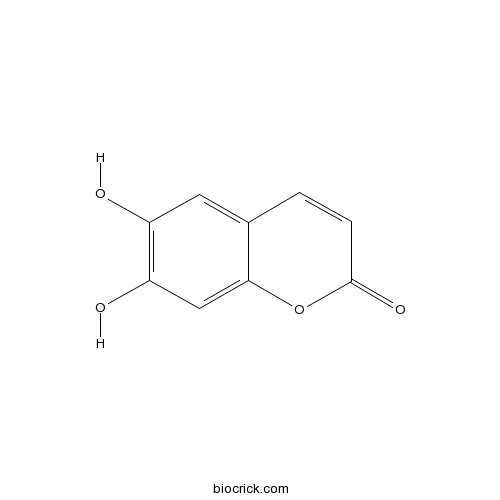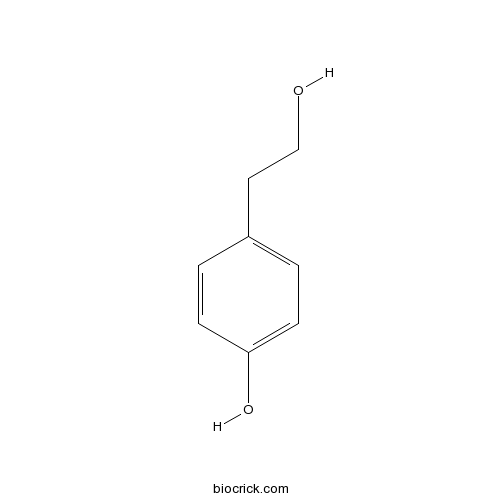Syringa oblata
Syringa oblata
1. The products in our compound library are selected from thousands of unique natural products; 2. It has the characteristics of diverse structure, diverse sources and wide coverage of activities; 3. Provide information on the activity of products from major journals, patents and research reports around the world, providing theoretical direction and research basis for further research and screening; 4. Free combination according to the type, source, target and disease of natural product; 5. The compound powder is placed in a covered tube and then discharged into a 10 x 10 cryostat; 6. Transport in ice pack or dry ice pack. Please store it at -20 °C as soon as possible after receiving the product, and use it as soon as possible after opening.
Natural products/compounds from Syringa oblata
- Cat.No. Product Name CAS Number COA
-
BCN5905
6,7-Dihydroxycoumarin305-01-1
Instructions

-
BCN5246
Oleuropein32619-42-4
Instructions

-
BCN5608
2-(4-Hydroxyphenyl)ethanol501-94-0
Instructions

-
BCN2205
D-Mannitol69-65-8
Instructions

Molecular characterization and functional analysis of chalcone synthase from Syringa oblata Lindl. in the flavonoid biosynthetic pathway.[Pubmed: 28890377]
The flower color of Syringa oblata Lindl., which is often modulated by the flavonoid content, varies and is an important ornamental feature. Chalcone synthase (CHS) catalyzes the first key step in the flavonoid biosynthetic pathway. However, little is known about the role of S. oblata CHS (SoCHS) in flavonoid biosynthesis in this species. Here, we isolate and analyze the cDNA (SoCHS1) that encodes CHS in S. oblata. We also sought to analyzed the molecular characteristics and function of flavonoid metabolism by SoCHS1. We successfully isolated the CHS-encoding genomic DNA (gDNA) in S. oblata (SoCHS1), and the gene structural analysis indicated it had no intron. The opening reading frame (ORF) sequence of SoCHS1 was 1170bp long and encoded a 389-amino acid polypeptide. Multiple sequence alignment revealed that both the conserved CHS active site residues and CHS signature sequence were in the deduced amino acid sequence of SoCHS1. Crystallographic analysis revealed that the protein structure of SoCHS1 is highly similar to that of FnCHS1 in Freesia hybrida. The quantitative real-time polymerase chain reaction (PCR) performed to detect the SoCHS1 transcript expression levels in flowers, and other tissues revealed the expression was significantly correlated with anthocyanin accumulation during flower development. The ectopic expression results of Nicotiana tabacum showed that SoCHS1 overexpression in transgenic tobacco changed the flower color from pale pink to pink. In conclusion, these results suggest that SoCHS1 plays an essential role in flavonoid biosynthesis in S. oblata, and could be used to modify flavonoid components in other plant species.
Secoiridoid Glucosides from the Twigs of Syringa oblata var. dilatata and Their Neuroprotective and Cytotoxic Activities.[Pubmed: 28381676]
Phytochemical investigation of the twigs of Syringa oblata var. diatata led to the isolation of two new secoiridoid glucosides, dilatioside A-B (1-2), along with thirteen known ones (3-15). The structures were determined by spectroscopic methods including one and two dimensional (1- and 2D-) NMR techniques, high resolution (HR)-FAB-MS, and chemical methods. The isolated compounds (1-15) were tested for the induction of nerve growth factor (NGF) secretion in a C6 rat glioma cell line and their cytotoxicity against four human cancer cell lines (A549, SK-OV-3, SK-MEL-2, HCT15) in vitro using a sulforhodamine B bioassay. Compounds 5, 7, 8, 10, and 14 were found to induce upregulation of NGF secretion without causing significant cell toxicity.
Extract of Syringa oblata: A new biocontrol agent against tobacco bacterial wilt caused by Ralstonia solanacearum.[Pubmed: 27914543]
Ralstonia solanacearum causes serious wilt disease in tobacco. To effectively control this disease, the antibacterial activity of 95% ethanol extracts from the flower buds of Syringa oblata was examined. Based on GC-MS analysis and an inhibition experiment against R. solanacearum, the main antibacterial component is eugenol. We further determined the effect of eugenol on the physiology, biochemistry, and cellular morphology of R. solanacearum. The results showed that eugenol can destroy wilt bacteria, leading to the disappearance of flagella, the leakage of contents, and the appearance of a cavity. SDS-PAGE showed that eugenol decreased protein content in R. solanacearum, reduced medium carbohydrate utilization, and inhibited CAT and SDH activity. The above results showed that eugenol had a significant inhibitory effect on R. solanacearum and this component has the potential to prevent tobacco bacterial wilt.
Transcriptome Analysis of Syringa oblata Lindl. Inflorescence Identifies Genes Associated with Pigment Biosynthesis and Scent Metabolism.[Pubmed: 26587670]
Syringa oblata Lindl. is a woody ornamental plant with high economic value and characteristics that include early flowering, multiple flower colors, and strong fragrance. Despite a long history of cultivation, the genetics and molecular biology of S. oblata are poorly understood. Transcriptome and expression profiling data are needed to identify genes and to better understand the biological mechanisms of floral pigments and scents in this species. Nine cDNA libraries were obtained from three replicates of three developmental stages: inflorescence with enlarged flower buds not protruded, inflorescence with corolla lobes not displayed, and inflorescence with flowers fully opened and emitting strong fragrance. Using the Illumina RNA-Seq technique, 319,425,972 clean reads were obtained and were assembled into 104,691 final unigenes (average length of 853 bp), 41.75% of which were annotated in the NCBI non-redundant protein database. Among the annotated unigenes, 36,967 were assigned to gene ontology categories and 19,956 were assigned to eukaryoticorthologous groups. Using the Kyoto Encyclopedia of Genes and Genomes pathway database, 12,388 unigenes were sorted into 286 pathways. Based on these transcriptomic data, we obtained a large number of candidate genes that were differentially expressed at different flower stages and that were related to floral pigment biosynthesis and fragrance metabolism. This comprehensive transcriptomic analysis provides fundamental information on the genes and pathways involved in flower secondary metabolism and development in S. oblata, providing a useful database for further research on S. oblata and other plants of genus Syringa.
Effects of stomatal development on stomatal conductance and on stomatal limitation of photosynthesis in Syringa oblata and Euonymus japonicus Thunb.[Pubmed: 25443830]
During leaf development, the increase in stomatal conductance cannot meet photosynthetic demand for CO2, thus leading to stomatal limitation of photosynthesis (Ls). Considering the crucial influences of stomatal development on stomatal conductance, we speculated whether stomatal development limits photosynthesis to some extent. To test this hypothesis, stomatal development, stomatal conductance and photosynthesis were carefully studied in both Syringa oblata (normal greening species) and Euonymus japonicus Thunb (delayed greening species). Our results show that the size of stomata increased gradually with leaf expansion, resulting in increased stomatal conductance up to the time of full leaf expansion. During this process, photosynthesis also increased steadily. Compared to that in S. oblata, the development of chloroplasts in E. japonicus Thunb was obviously delayed, leading to a delay in the improvement of photosynthetic capacity. Further analysis revealed that before full leaf expansion, stomatal limitation increased rapidly in both S. oblata and E. japonicus Thunb; after full leaf expansion, stomatal limitation continually increased in E. japonicus Thunb. Accordingly, we suggested that the enhancement of photosynthetic capacity is the main factor leading to stomatal limitation during leaf development but that stomatal development can alleviate stomatal limitation with the increase of photosynthesis by controlling gas exchange.
[Determination of oleuropein in stem of Syringa oblata from different districts by HPLC].[Pubmed: 19445155]
To develop an HPLC method for the determination of oleuropein in Syringa oblata.


